Characters of the creek🧊
The making of Helena Deland's Silver and Red video, trying to respond to land
hello! I want to tell you about an experience animating with a frozen creek, and an attempt to ‘respond to the land’
I started the year with a humbling experience. I woke up bone-chilled cold, it was only 6am but I was so chilled that I couldn’t keep sleeping. Desperately, I made a fire, shivering, my winter coat over my pyjamas. I was staying in a little cabin and wasn’t experienced enough with the wood stove to know how to keep the place heated overnight. I made tea, heated up soup that was supposed to be my dinner, and thawed myself through. Once finally warm, I bundled up thick and spent the day lying around in the snow, investigating a nearby frozen creek.
I made this video ^ with and for Helena Deland, kind friend, cool person, all-star-musician-singer-songwriter. It follows the many characters I found travelling along this frozen creek.
Before we got there, Helena and I turned through ideas, including baking a cake, and exchanged inspirations, the likes of which were Jane Aaron, Sarah Jenkins, and the dream sequences for Perfect Days. Eventually we landed on a simple but daunting plan: I’ll go up to Port William Sound, which is a music studio in the woods run by one-of-a-kind guy Jonas+family, go for a walk, and find the animation in the environment, on the walk. The song is about going on a walk after all, and it was recorded the year prior at the studio, so why not take a walk there and see what I can find? Maybe “respond to the land”..
ps. Jonah Yano, who first brought me around, explains the wonder of Port William and its permanent inhabitants— Jonas, Caylie, Gem— in his new substack, here.
I had to step carefully for I was walking on thin ice, both in the literal and metaphorical flavours. Literally because the ice covering the creek was thin, and I had to be quite intimate with it, standing on it and lying on it. Setting up my tripod was difficult but I found creative solutions, working with the ice formations to substitute for my tripod legs (at one point my phone and tripod totally dunked into the creek— it was fine). Metaphorically because I hadn’t done a land-animation type video before, where I was responding to a whole place and not just a material, and so I wanted to do it justice. (Thank you Helena for trusting me to just wing it).
Responding to land
Moments after getting off the meeting call with Helena I realized, ‘wait, winging this is going to be a lot of pressure.’ So how do you plan for improvisation? I don’t know, but perhaps it is: make plans to sooth your anxiety, convince yourself that they’re of value, and then, crucially, discard them as soon as you find what you’re really looking for. Making these plans isn’t very difficult— they become a life-line while wading through dense unknowns. The hard part is letting them go, to see what’s being shown to you.
At some point recently, I started saying that I would love to “go to a place and respond to the land”. This is something that I read on gallery walls sometimes, in those often stuffy exhibition statements, that I guess I thought sounded nice without completely understanding it. I would say, “I want to be somewhere respond to the land”, and people would go “ouuu”, and “mmm”, and I would nod and feel good about myself. I still don’t know what it means to respond to land, and I suspect it is something I’ll be learning for a long time, but this is an account of my first try.

Once I got there, my vision of a snowy wooded forest, light-dappled tree roots, and green spots from coniferous trees quickly melted. I learned that the woods are the neighbours, no trespassing. But hey- check the rail path nearby. Hoping for at least some trees, I was instead met with… a southern-Ontario rail path. Vast. Barren. Once a train track, now an elevated pathway that dips on either side, surrounded by fields and some houses. In the small valleys beside the pathway though, I found a little creek mostly frozen over, with ice crafted into waving sculptural shapes and bubbles beneath the surface navigating the changing terrain. It was magnetically cool, but nothing like the made up images in my head.
When I found this frozen creek, I experienced a sensation that I’m still becoming comfortable with, like pushing out of a thick muck made up of my rationale, which begs me to plan, and lean into my intuition, which suggests to see whats around me. So after some internal complaining I threw out my plans and made friends with this creek.
Over the next couple of days what I was doing started to make sense. This is what I think responding to the land is- it is being guided, not doing the guiding. In this key, the video follows the flow of the creek, each shot moving steadily from left to right, moving with the current.
Technical Aspects of the Video
I’ve been curious about bringing together animated sequences with recorded video, where the viewer doesn’t always know the line distinguishing between the two. So the clips that started as research documenting the creek became important scenes themselves. During my second day, I discovered a part of the water that wasn’t frozen over. On the creek-bed were beautiful markings, made by the difference in tone between the light top-most sand and the darker under sand. Taking a long stick, I dragged around the sand bit by bit, redistributing the sand and modifying the marks. The next day I returned to this section of the creek to do more of the same, but it had completely frozen over.
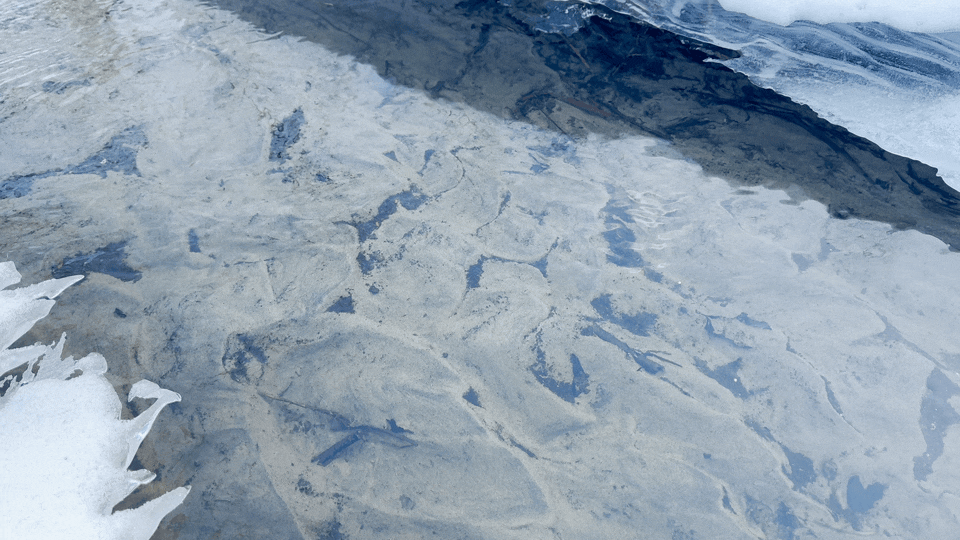
As I found more moments in the creek, I would decide to either animate them or capture them in plain. The movement of the bubbles or water creeping over snowy ice felt like animation itself already. I mean, it is of course animation, it was moving. Instead of needing to put my fingers in everything I let these natural animations sing themselves. When I did meddle, I opted for simple animation that made sense in the moment- dragging a rock along the ice to carve a path, moving water along the ice surface, rearranging bits of snow.
Each day when it would get dark, I would return to the cabin and warm up while drinking Jonas’s home-brew wine, putting together the new scenes (luckily I was getting better at tending to fires). Around the time I was meant to leave, I felt I had found all that was left out for me, and the video had already taken its shape.
Peers responding to lands
I’m no expert, evidently, but I believe an artist can approach responding to the land in many ways. I talk about the futility of planning, but you can certainly plan ahead effectively. I wasn’t well acquainted with the area, and I was romanticizing the idea of the land suddenly speaking to me, which, in the end it kind of did. Under different circumstances, the work could have been informed by careful research; learning about the makeup of a site, and having the sciences and history help shape the creative and conceptual decisions made.
Lewis Heriz, cool, smart, interesting artist and animator, recently completely a similar project and wrote about it. He and other artists were asked to make animation relating to different gardens in Derby, UK. His process involved more site visits, reading, and careful thinking. He shared with me though, despite his more effective planning, initially he also had tried to put in more than what was being offered to him. Maybe being humbled is a core aspect of responding to the land. Read about his project here here:
Also, my good friends Masumi and Elena, who I worked with on our animation Ksha-sha, recently completed an artist residency in Mexico. They had a pretty clear idea of how their project would go- they were going to make some experimental paper (they’re experimental papermakers). Faced with surprising circumstances, they adapted and found a brand new collaborative partner, and medium, in the clay that made up the soil they were living on. Working with the community and local fallen brick, they completed a permanent sculptural installation instead of paper. See more about it here.
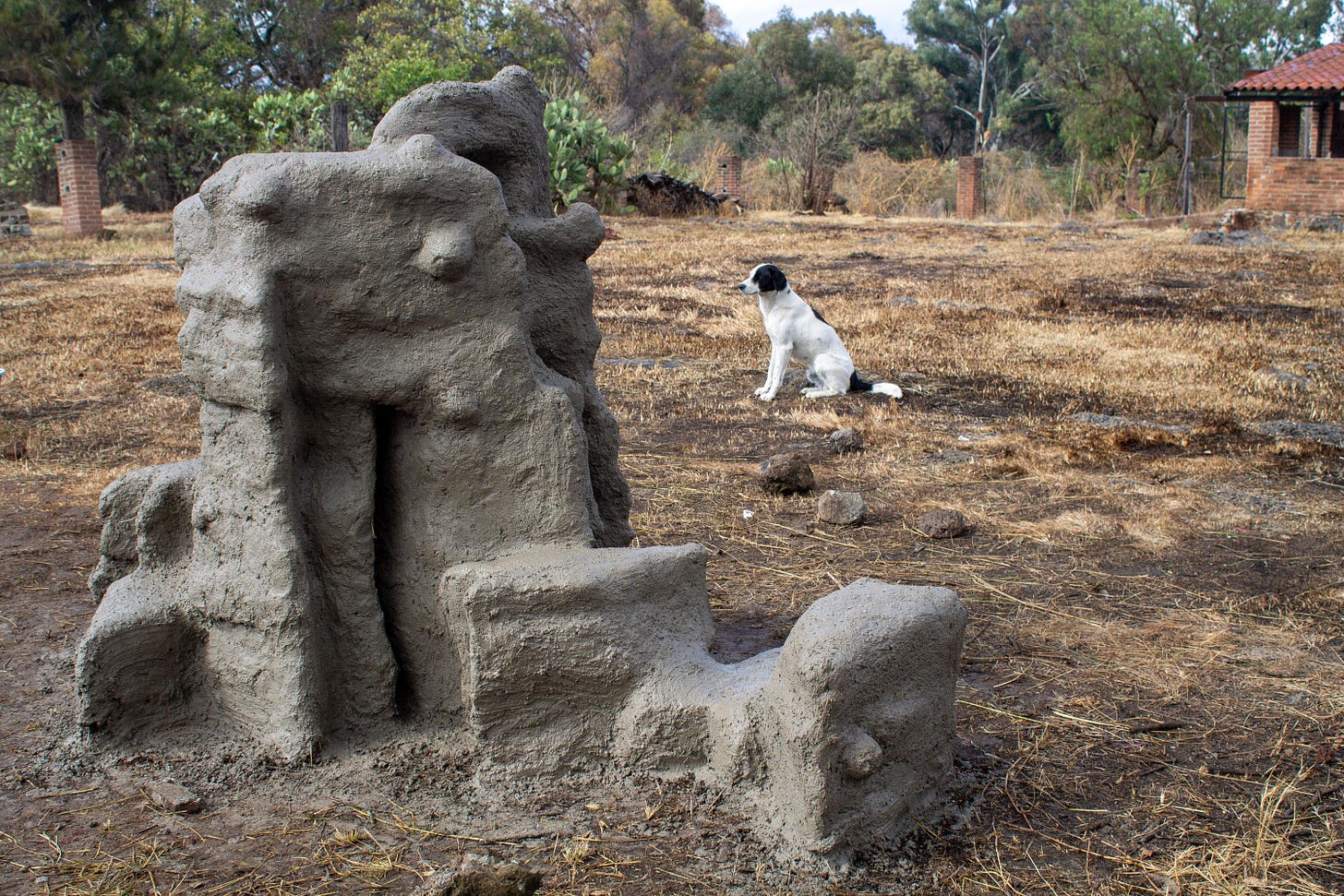
Sometimes I feel like I’m cosplaying as someone else. I work with nature, but I’m very much in my infancy of learning about the environment, natural objects, the world at large. I don’t know how to respond to land, because I hardly know how to listen to land, or even see the land. I entered my adulthood not being able to distinguish any herbs from one another. These projects and experiments are an animated journal of my progress learning to see and hear better. Sometimes I get ahead of myself, thinking I’ve learned more than I have, and then I wake up freezing, I can’t build a fire, and I have to actually open my eyes and look around because I almost missed this creek looking for a boring forest.
The bow on the video was Anna Chandler’s incredible titlecard that she conjured in mere days, helping you feel as though you’re watching this little film in a little theatre. Thanks Anna! Thanks Helena! Thanks for reading.
That’s alllllll this time. I have some more posts planned so hopefully they come soon.
-n


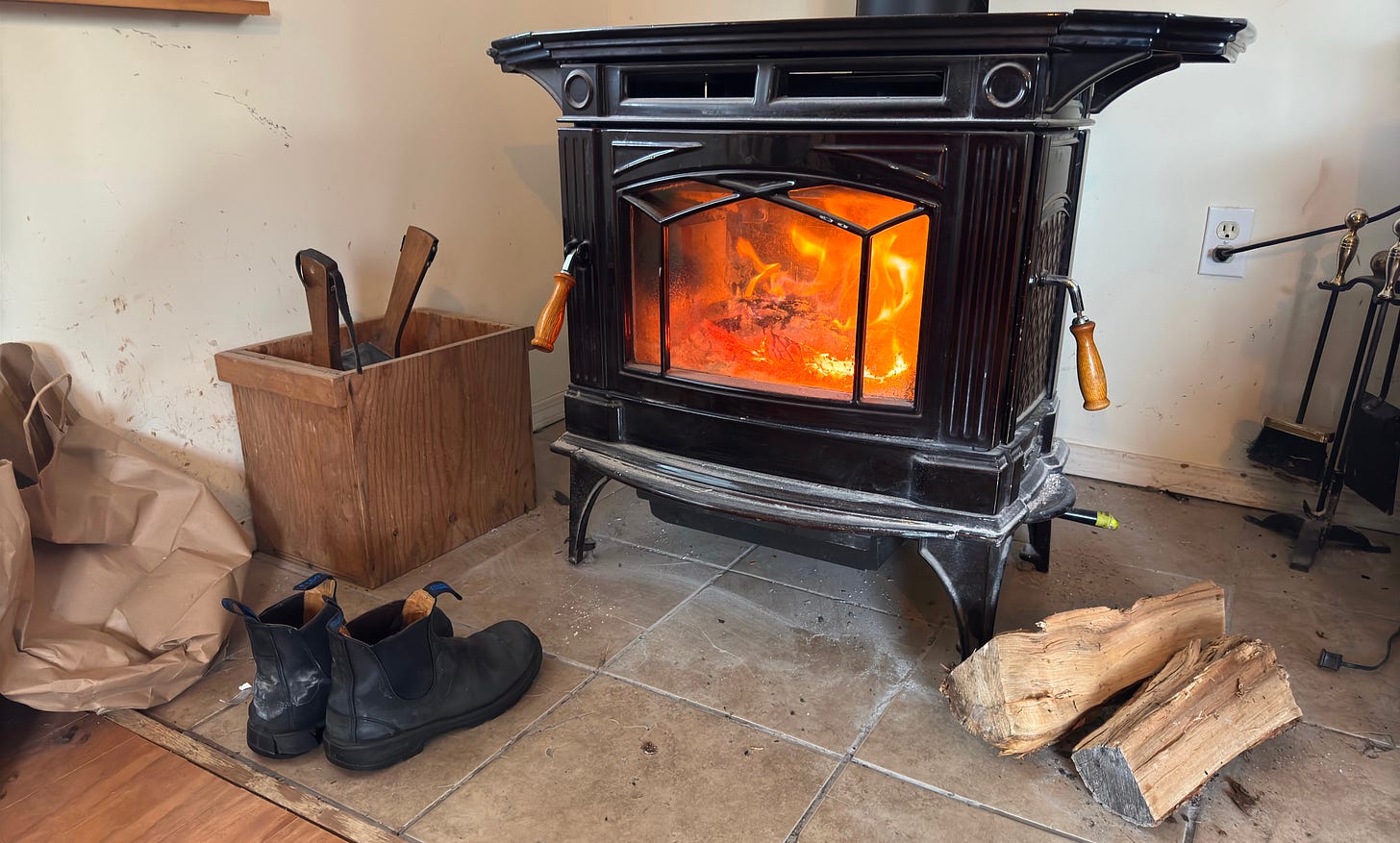
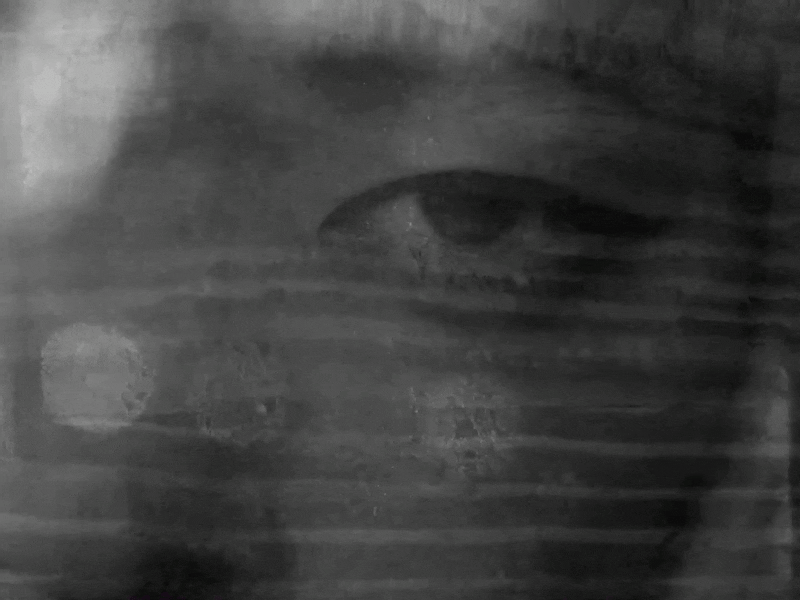
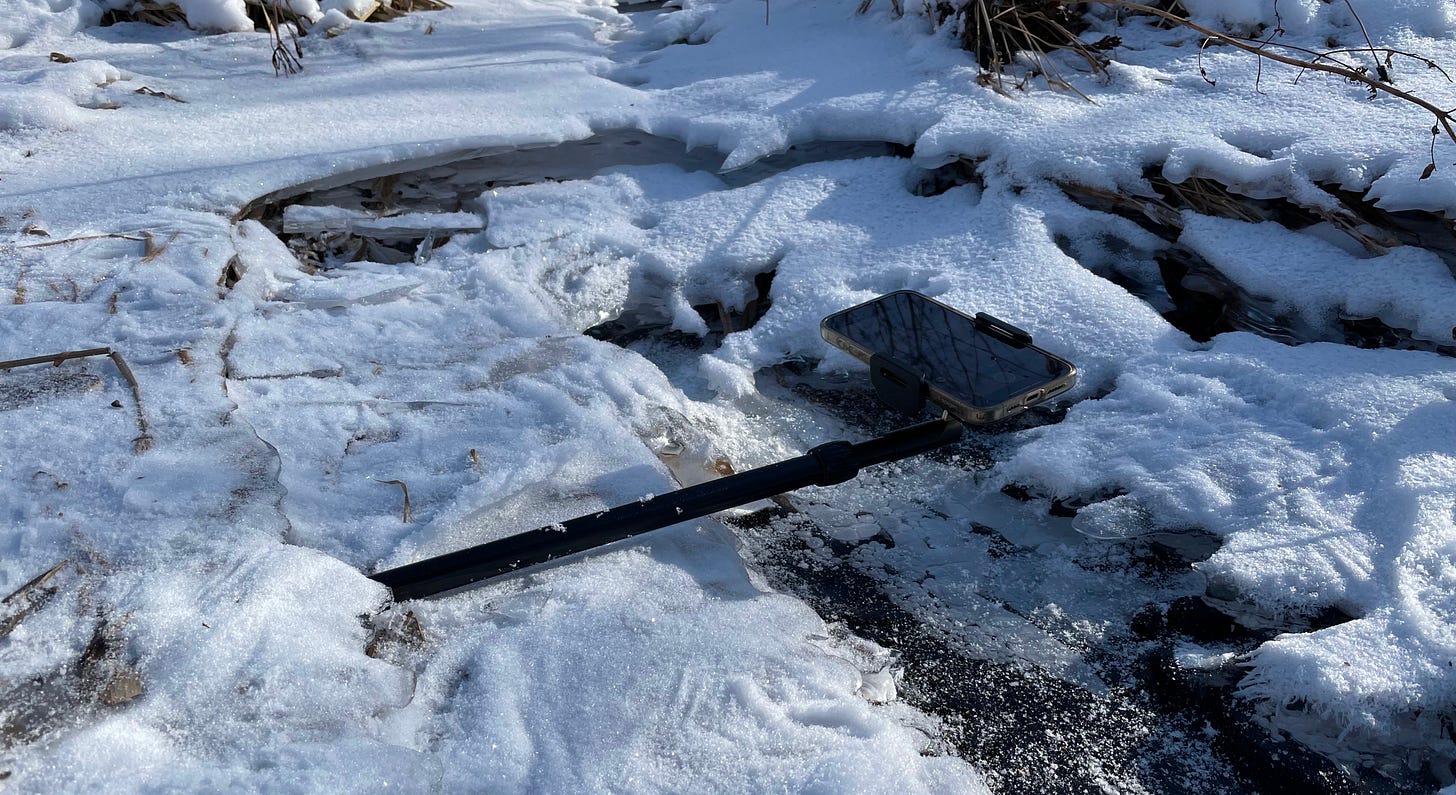

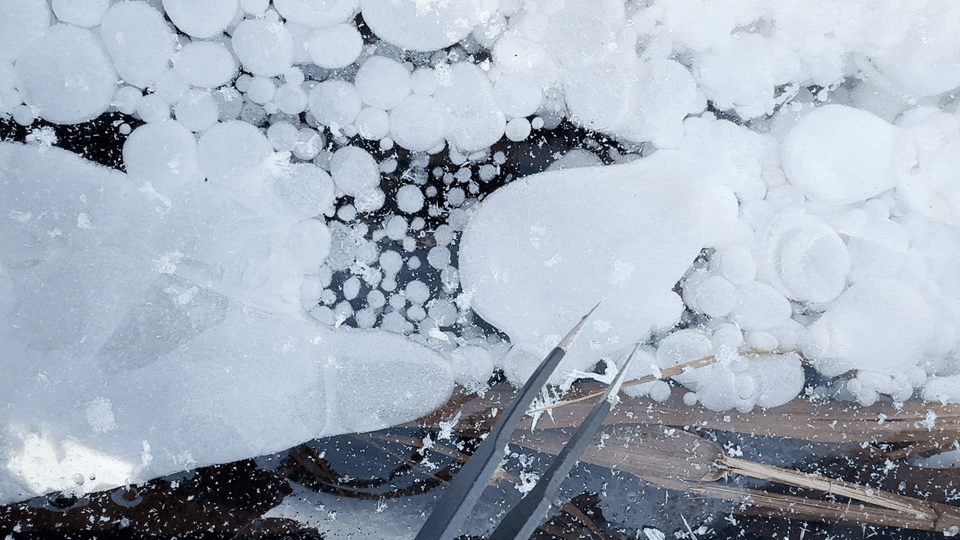

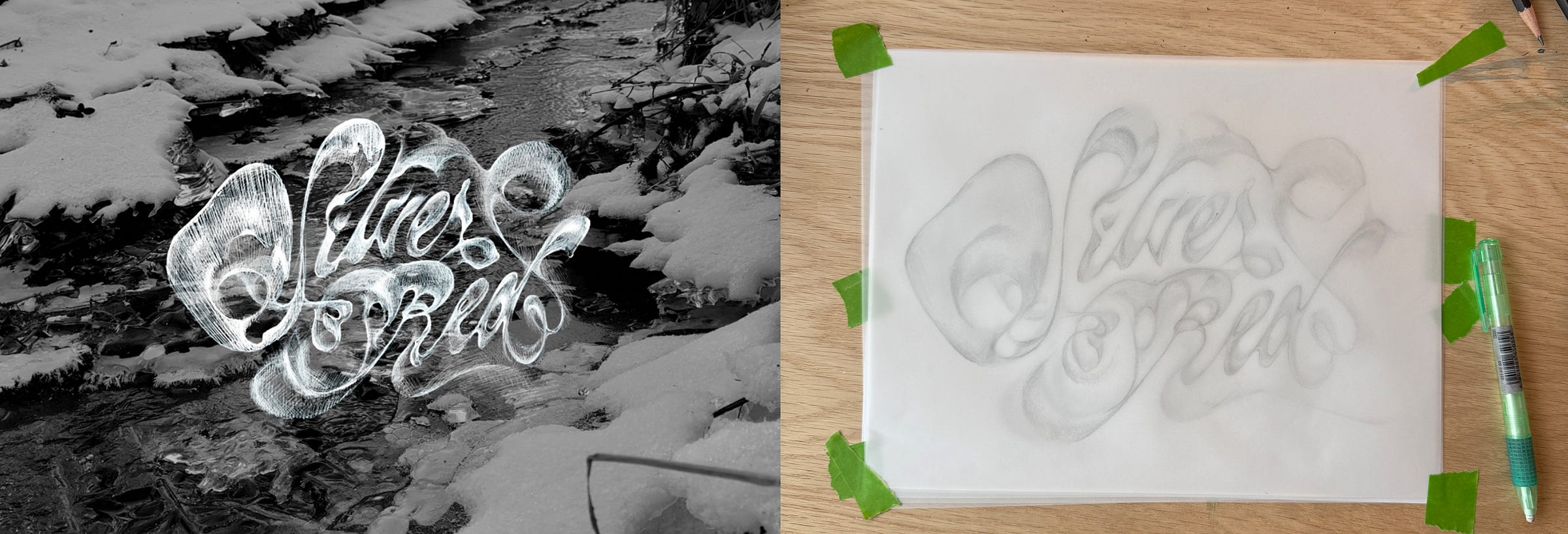
So great Nik. You make it look so easy, but getting that kind of natural movement when out in nature is devilishly hard. (And thanks, that was a lovely surprise!)
love hearing you connect your thought processes to others artists you value. great read